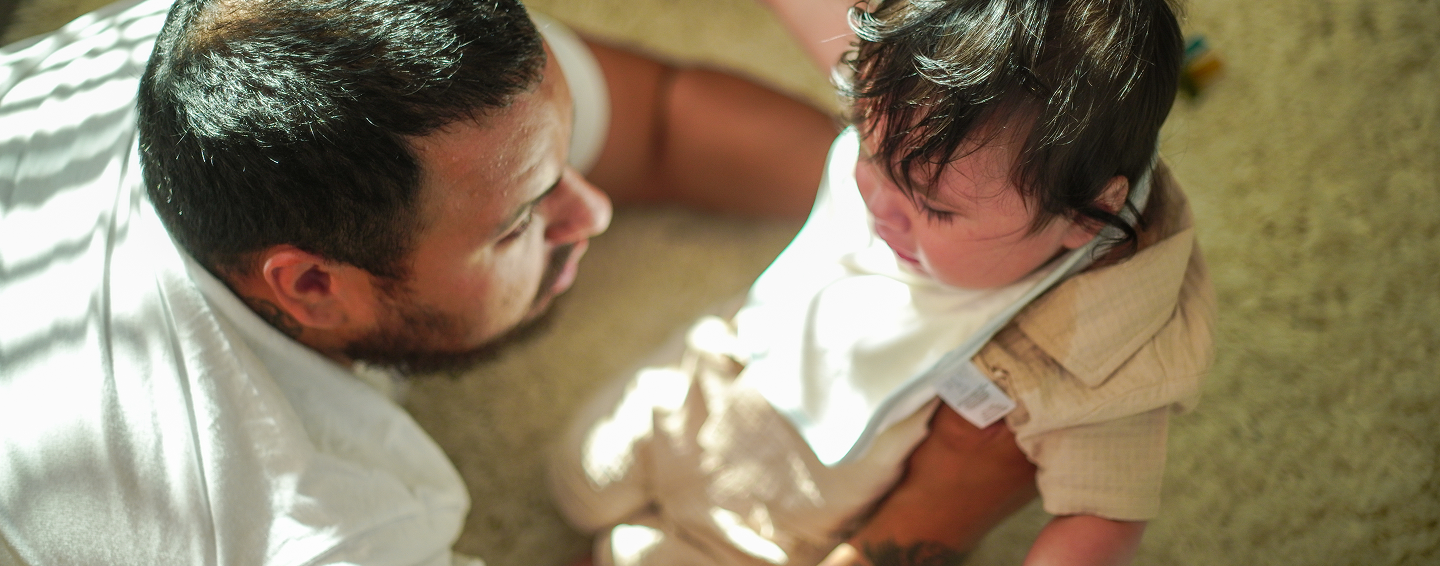Why Natural Baby Sleep Aids Matter for Exhausted Parents
A natural baby sleep aid can be the difference between another sleepless night and finally getting the rest your family desperately needs. Here are the most effective, evidence-based natural sleep solutions for babies:
Top Natural Baby Sleep Aids:
- Swaddling - Reduces startle reflex and increases quiet sleep time
- White noise - 80% of newborns fall asleep within 5 minutes vs. 25% without it
- Consistent bedtime routine - Signals sleep time to baby's developing circadian rhythm
- Infant massage - Reduces night wakings and promotes deeper sleep
- Room darkness - Supports natural melatonin production
- Pacifiers - May reduce SIDS risk while providing comfort
- Rhythmic motion - Mimics the womb environment babies crave
Sleep disturbances affect 20-30% of toddlers, and by 8-9 months, only 70% of babies sleep through the night regularly. The good news? Natural sleep aids work without medications or harsh interventions.
These gentle, science-backed methods help babies develop healthy sleep patterns while giving parents the relief they need. From swaddling techniques that calm the startle reflex to white noise that recreates womb sounds, natural approaches work with your baby's biology rather than against it.
As Gary Harutyunyan, I understand the desperation of sleepless nights - my own newborn's sleep struggles led me to research every possible natural baby sleep aid until I found solutions that actually worked. My experience as both a parent and someone who created the Sleepy Baby device has taught me that the right combination of natural techniques can transform your family's sleep.
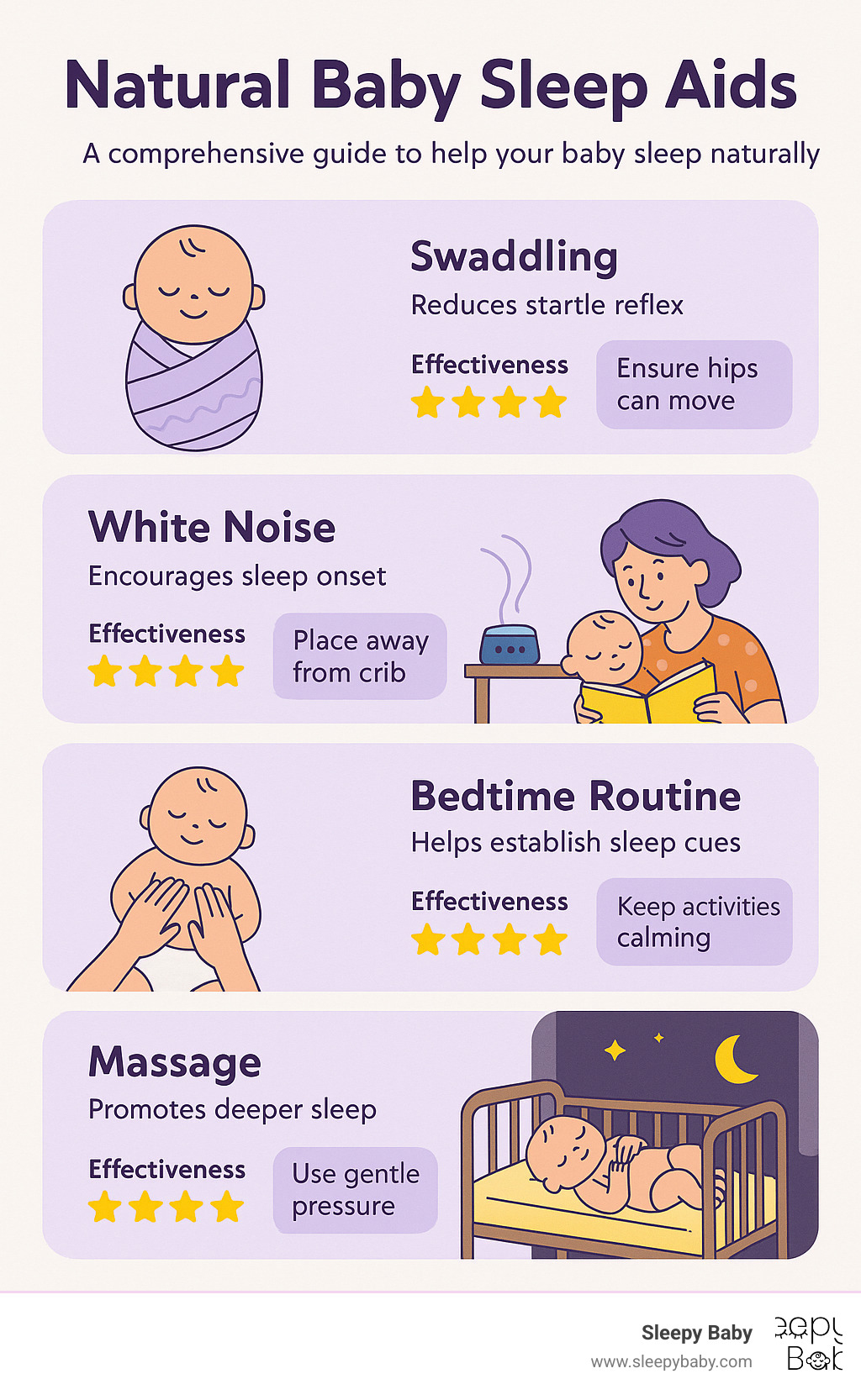
Understanding Natural Sleep Aids for Babies
When you're holding your crying baby at 3 AM, the term "natural baby sleep aid" might sound too good to be true. But here's the beautiful reality: the most effective sleep solutions for babies don't come from a bottle or require a prescription. They work with your little one's developing biology, not against it.
Natural sleep aids are gentle approaches that support your baby's innate ability to fall asleep and stay asleep. These methods don't introduce foreign substances into your infant's developing system. Instead, they create the right conditions for natural sleep to happen.
What makes a sleep aid truly "natural"? It uses your baby's biological responses, supports their developmental milestones, and helps establish healthy circadian rhythms without medications or supplements. From swaddling that calms the startle reflex to white noise that recreates familiar womb sounds, these techniques work because they make sense to your baby's developing brain.
Let's clear up a dangerous misconception right away: melatonin supplements are not safe for babies. Despite being marketed as "natural," melatonin lacks sufficient safety research in infants and can interfere with their developing hormone systems.
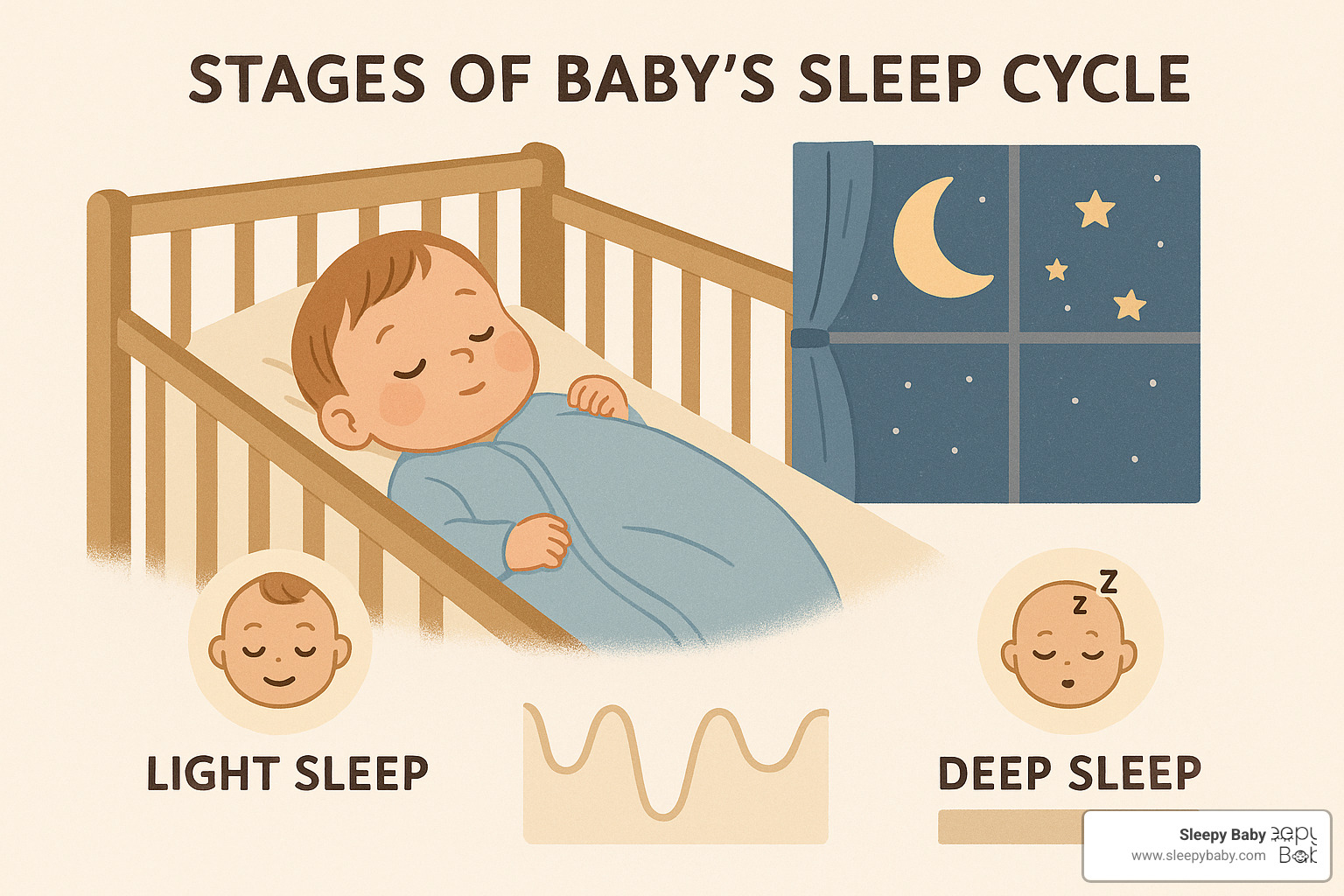
Cultural practices around the world have long recognized the power of natural sleep aids. From rhythmic rocking cradles used in Thailand to skin-to-skin contact practiced by various cultures, humans have instinctively developed methods that align with infant sleep biology.
The science behind why natural baby sleep aids work is fascinating. Scientific research on infant sleep cycles reveals that newborns are born with completely immature circadian rhythms. Your baby doesn't develop mature sleep-wake cycles until around 3-4 months of age.
This explains why your newborn seems to have their days and nights mixed up - they literally don't know the difference yet! Natural approaches work by recreating the familiar environment of the womb while gradually introducing sleep cues that help establish healthy patterns.
Top 10 Evidence-Based Natural Baby Sleep Aids
When you're facing another sleepless night, it helps to know that natural baby sleep aids have solid science backing them up. Scientific research on white-noise effectiveness shows that these gentle approaches work by addressing the root causes of infant sleep challenges rather than masking symptoms.
What makes these methods so effective is that they work together beautifully. Swaddling reduces those jarring startle reflexes that wake babies, while white noise recreates the constant whooshing sounds they heard in the womb. A consistent bedtime routine signals to your baby's developing brain that sleep time is coming, and infant massage releases calming hormones that promote deeper rest.
The beauty of natural approaches is how they support your baby's biology. Room darkness helps their natural melatonin production kick in around 3-4 months, pacifiers provide comfort while potentially reducing SIDS risk, and rhythmic motion activates the same vestibular system that kept them calm during pregnancy.
Swaddling as a Natural Baby Sleep Aid
That jerky startle reflex (called the Moro reflex) is probably waking your baby more than you realize. Swaddling is such an effective natural baby sleep aid because it prevents this exact scenario.
Think of swaddling as recreating the snug environment your baby knew for nine months. The gentle pressure mimics the womb's containment while helping regulate their body temperature. Research consistently shows that swaddled babies have fewer spontaneous awakenings and spend significantly more time in that precious quiet sleep phase.
But here's the crucial part - technique matters enormously for safety. Scientific research on swaddling safety emphasizes that your swaddled baby must always sleep on their back. The wrap should be snug around the arms but loose around the hips and legs to prevent hip dysplasia.
You'll need to stop swaddling once your baby shows signs of rolling over, typically around 2-4 months. Use breathable fabrics and always leave room for chest expansion.
White Noise: A Proven Natural Baby Sleep Aid
The numbers don't lie - 80% of newborns fall asleep within 5 minutes when exposed to white noise, compared to only 25% without it. That's because your baby spent nine months listening to the constant whooshing of blood flow, heartbeat, and digestive sounds.
White noise works on multiple levels as a natural baby sleep aid. It masks those household sounds that might startle your sleeping baby while providing the consistent auditory environment your baby's brain is wired to expect.
The key is getting the setup right for safety. Keep sound machines at least 30 centimeters from your baby's crib and maintain the volume below 50 decibels at their ear level. Choose consistent, non-varying sounds rather than music or nature sounds with changing patterns.
Consistent Bedtime Routine
Your baby's circadian rhythm is still developing, which means they need external cues to understand when it's time to sleep. A predictable bedtime routine becomes one of the most powerful natural baby sleep aids because it literally teaches your baby's brain to prepare for rest.
Start with a warm bath, using gentle, calming motions rather than energetic play. Follow with soft lullabies or quiet talking - your voice is incredibly soothing to your baby. Include some gentle massage or skin-to-skin contact, and keep lighting dim throughout the entire routine.
More info about bedtime routines shows that timing matters too. Aim for the same time each night and keep the entire routine to 20-30 minutes.
Infant Massage & Skin-to-Skin Contact
Touch is incredibly powerful for infant sleep. A gentle 15-minute massage before bedtime releases oxytocin (the bonding hormone) in both you and your baby while reducing cortisol (the stress hormone). This hormonal shift naturally promotes deeper, more restful sleep.

Skin-to-skin contact (kangaroo care) works beautifully too, especially for newborns. When your baby lies against your bare chest, their heart rate and breathing naturally regulate to match yours.
The massage doesn't need to be complicated. Use gentle, rhythmic strokes on your baby's arms, legs, and back. Research shows that babies who receive regular massage have improved circulation, better digestion, and significantly fewer night wakings.
Feeding Strategies – Breastmilk & Dream Feeds
Here's something amazing about breast milk - it naturally contains melatonin, especially in evening feedings. Your body is literally providing your baby with a natural baby sleep aid that follows your own circadian rhythm.
Dream feeding can be a game-changer for extending sleep periods. This involves feeding your baby while they're still mostly asleep, typically right before you go to bed. The idea is to "top them off" so they sleep longer without fully waking up.
Pay attention to feeding timing and quantity. Always burp thoroughly to prevent gas-related discomfort, and watch for signs of reflux that might interfere with comfortable sleep positioning.
Comfort Objects & Pacifiers
44% of children between 6 months and 4 years use some type of comfort object at bedtime, and research shows these can be remarkably effective natural sleep aids. Pacifiers deserve special mention because they provide comfort while potentially reducing SIDS risk when used during sleep times.
The key with pacifiers is timing - wait until breastfeeding is well established (usually 3-4 weeks) before introducing one. For other comfort objects like small blankets or soft toys, safety comes first. Keep cribs completely clear of loose objects for babies under 12 months.
Daytime Light Exposure & Nighttime Darkness
Your baby's internal clock needs clear signals about when it's day and when it's night. Bright natural light during daytime hours helps synchronize their developing circadian rhythm, while darkness at night supports their natural melatonin production.
Make daytime light exposure part of your daily routine. Take your baby outside for natural sunlight, even if it's just sitting by a bright window. As evening approaches, start dimming lights about 1-2 hours before bedtime.
Motion: Rocking, Rhythmic Patting, Wearables
Gentle, rhythmic motion activates your baby's vestibular system and provides the movement they experienced constantly in the womb. This is why rocking, swaying, and rhythmic patting are such instinctively effective natural baby sleep aids.
The key word here is rhythmic - consistent, predictable movement that mimics the gentle swaying your baby felt during pregnancy. At Sleepy Baby, we've designed our device specifically to provide this soothing rhythmic patting motion hands-free. It allows you to give your baby the comforting movement they crave while still being able to rest yourself.
Aromatherapy & Gentle Herbal Supports
While we must be extremely cautious with essential oils around babies, some gentle aromatherapy approaches can be effective when used safely. Scientific research on lavender baths shows that lavender-scented baths can reduce cortisol levels and promote deeper sleep in both babies and mothers.
The safest approach is using lavender-scented bath products specifically designed for babies rather than pure essential oils. If you do use essential oils, they must be highly diluted - we're talking 1-2 drops per 2 tablespoons of carrier oil.
Temperature & Clothing Tweaks
Temperature regulation plays a huge role in infant sleep quality. Babies sleep best in slightly cool environments between 68-72°F, and they can wake frequently if they're too hot or too cold.
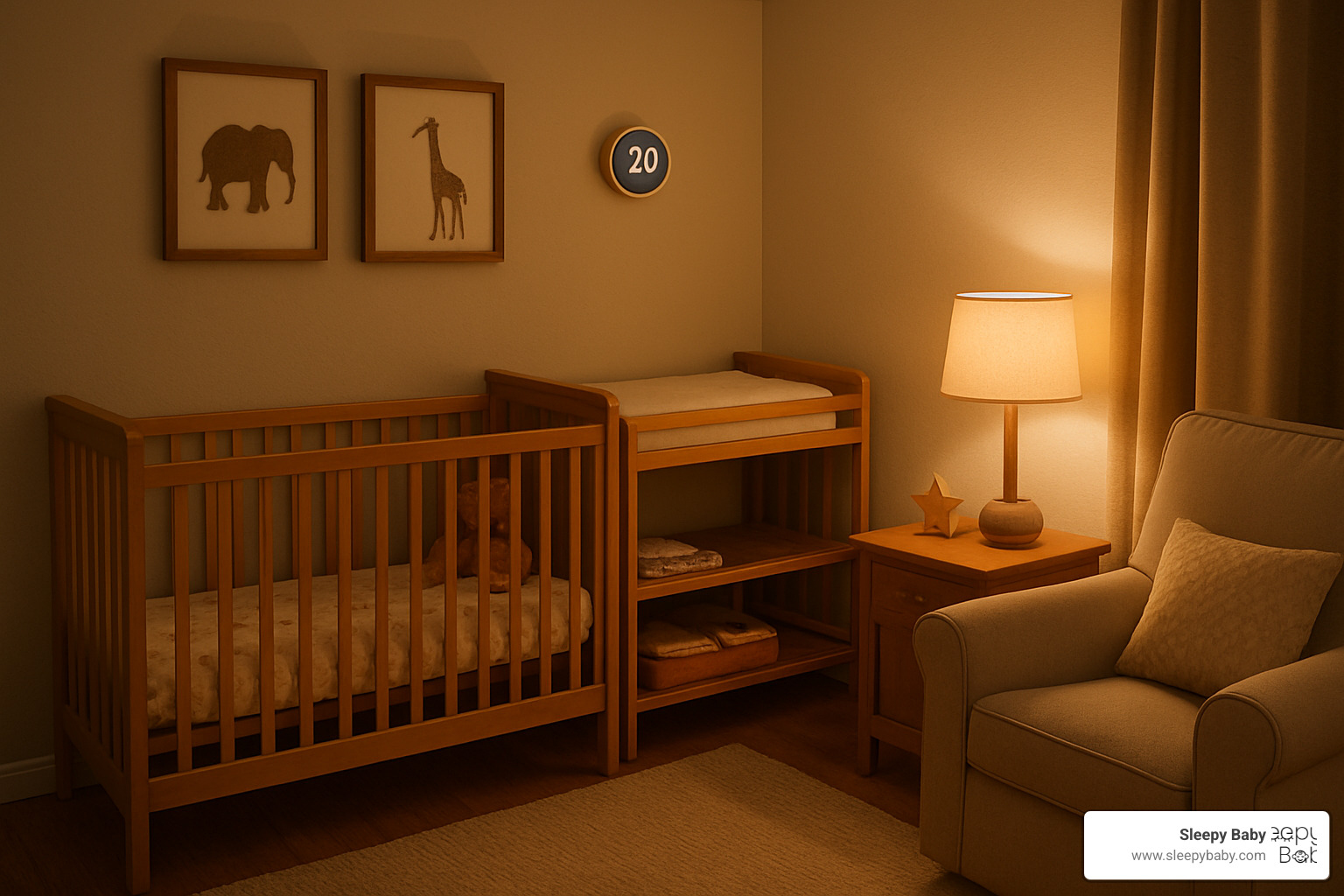
Dress your baby in breathable, natural fabrics that wick moisture away from their skin. Sleep sacks are ideal because they provide warmth without the safety risks of loose blankets. Check your baby's temperature by feeling their chest or the back of their neck - these areas give you a better reading than their hands or feet.
Crafting the Ultimate Sleep Environment & Routine
Think of creating the perfect sleep environment like building a cozy nest where all your natural baby sleep aids work together in harmony. When you combine the right elements consistently, you're setting your baby up for sleep success night after night.
The foundation starts with your baby's room itself. A dark room is absolutely essential - those blackout curtains aren't just a nice-to-have, they're a game-changer. Your white noise machine needs strategic placement too. Position it away from the crib but close enough that your baby can hear those soothing sounds clearly.
Safety never takes a backseat to comfort. Your baby's safe sleep surface should have a firm mattress with just a fitted sheet - no pillows, blankets, or stuffed animals for babies under 12 months.
Temperature control makes a bigger difference than most parents realize. That sweet spot of 68-72°F consistently maintained will prevent those middle-of-the-night wake-ups from being too hot or too cold.
Here's where timing becomes crucial. Optimal bedtime for babies over 3 months typically falls between 6:30-8:00 PM - much earlier than many parents expect. Fighting this natural rhythm often backfires, leading to an overtired baby who struggles to settle.
Age-appropriate nap schedules prevent the overtiredness trap that makes nighttime sleep harder. When babies get too tired, their stress hormones actually make it more difficult to fall asleep, not easier.
The magic happens when you put your baby down awake but drowsy. This gives them precious self-soothing opportunities to practice the skill of falling asleep independently. More info about self-soothing skills shows how this one change can transform your family's sleep patterns.
| Ideal Environment | Problematic Environment |
|---|---|
| Dark, quiet room | Bright, noisy space |
| Consistent temperature | Fluctuating temperatures |
| Minimal stimulation | Overstimulating surroundings |
| Predictable routine | Inconsistent timing |
| Safe sleep surface | Unsafe sleep arrangements |
Creating this perfect environment isn't about achieving perfection on day one. It's about consistency and gradually building these elements into a routine that works for your unique baby.
Safety & Common Questions about Natural Baby Sleep Aids
When you're desperately searching for a natural baby sleep aid that actually works, it's easy to assume that "natural" automatically means "completely safe." While natural approaches are generally much safer than pharmaceutical options, understanding proper use and potential risks is crucial for your baby's wellbeing.
Even gentle methods require careful attention to safety guidelines. Essential oils need proper dilution, comfort objects must be age-appropriate, and even something as simple as room temperature can impact your baby's safety during sleep.
Essential oil safety is particularly important because babies have much more sensitive skin and developing respiratory systems than adults. Never use undiluted oils directly on your baby's skin - always dilute to 1-2 drops per 2 tablespoons of carrier oil. Avoid stimulating oils like peppermint or eucalyptus entirely.
Scientific research on melatonin safety makes it clear that melatonin supplements aren't recommended for infants. Despite being naturally occurring, they lack sufficient safety data for babies and can interfere with developing hormone systems.
When Is a Sleep Issue NOT Normal?
Most parents worry whether their baby's sleep struggles are normal or something more serious. While frequent night wakings and some bedtime resistance are completely typical in the first year, certain signs warrant immediate medical attention.
Watch for these red flags: persistent GERD symptoms like frequent spitting up combined with back arching and feeding refusal, signs of sleep apnea including breathing pauses or gasping during sleep, developmental delays where your baby isn't meeting age-appropriate sleep milestones, or failure to thrive with poor weight gain alongside sleep issues.
The key difference between normal and concerning patterns often comes down to improvement over time. It's normal for babies to wake frequently in their first six months, but if there's absolutely no improvement in sleep patterns after six months, that's worth discussing with your pediatrician.
Is Melatonin Safe for Babies?
This is one of the most common questions exhausted parents ask, and the answer is a clear no - melatonin supplements are not recommended for babies. I know this might be disappointing when you're dealing with yet another sleepless night, but there are important reasons behind this recommendation.
Melatonin supplements pose several risks for infants. There's a significant lack of safety research specifically in infants, and these supplements can potentially interfere with your baby's natural hormone development. There are no established dosing guidelines for babies, and ironically, melatonin supplements can sometimes cause increased night wakings rather than helping sleep.
The good news is that babies naturally begin producing their own melatonin around 3 months of age. Supporting this natural development through proper light exposure during the day and darkness at night is much safer and more effective than artificial supplements.
Essential Oils: Helpful or Harmful?
Essential oils occupy a tricky middle ground - they can be genuinely helpful natural baby sleep aids when used correctly, but they pose significant risks when used improperly around babies.
The key to safe essential oil use is understanding that your baby's skin and respiratory system are much more sensitive than yours. Always dilute oils appropriately using 1-2 drops per 2 tablespoons of carrier oil, and only use them after your baby is 3 months old. Stick to gentle oils like lavender or chamomile.
Certain oils should be completely avoided with babies: peppermint is too stimulating, eucalyptus can be a respiratory irritant, tea tree oil is too strong, and rosemary can be potentially toxic. Never use any undiluted essential oil on your baby.
Essential oils are just one option among many effective natural approaches. If you're unsure about using them, there are plenty of other proven natural baby sleep aids like swaddling, white noise, and consistent routines that don't carry the same risks.
Conclusion
After months of sleepless nights, it's easy to feel overwhelmed by all the advice out there. But here's the beautiful truth: the most effective solutions for your baby's sleep challenges are often the simplest, most natural ones.
These evidence-based natural baby sleep aids work so well because they don't fight against your baby's natural development - they support it. Swaddling works because it addresses that jerky startle reflex that's been waking your little one. White noise is effective because it brings back those familiar whooshing sounds from the womb that made everything feel safe and calm.
When you establish a consistent bedtime routine, you're not just going through motions - you're helping your baby's developing brain understand when it's time to wind down. That gentle massage or skin-to-skin contact isn't just sweet bonding time - it's actively reducing stress hormones and promoting deeper sleep.
The magic happens when you combine these approaches thoughtfully. A dark room with gentle white noise, a properly swaddled baby who's had their evening massage, and parents who understand that this process takes patience and consistency.
Every baby is wonderfully unique, which means what works like magic for your friend's baby might need some tweaking for yours. Don't get discouraged if the first approach you try doesn't work immediately. Sometimes it's about finding the right combination, and sometimes it's simply about giving your baby's developing sleep patterns a little more time.
At Sleepy Baby, we created our rhythmic patting device because we understand that sometimes you need that extra support - something that can provide the consistent, gentle motion your baby craves while giving your tired arms a break. It's about combining the wisdom of natural sleep techniques with practical solutions for real families.
More info about best sleep aids for infants offers even more detailed guidance as you continue this journey.
Establishing healthy sleep patterns is a process, not a one-night change. Be gentle with yourself during those challenging nights. You're not failing if it takes time - you're being a thoughtful parent who's choosing safe, natural approaches over quick fixes that might cause more problems later.
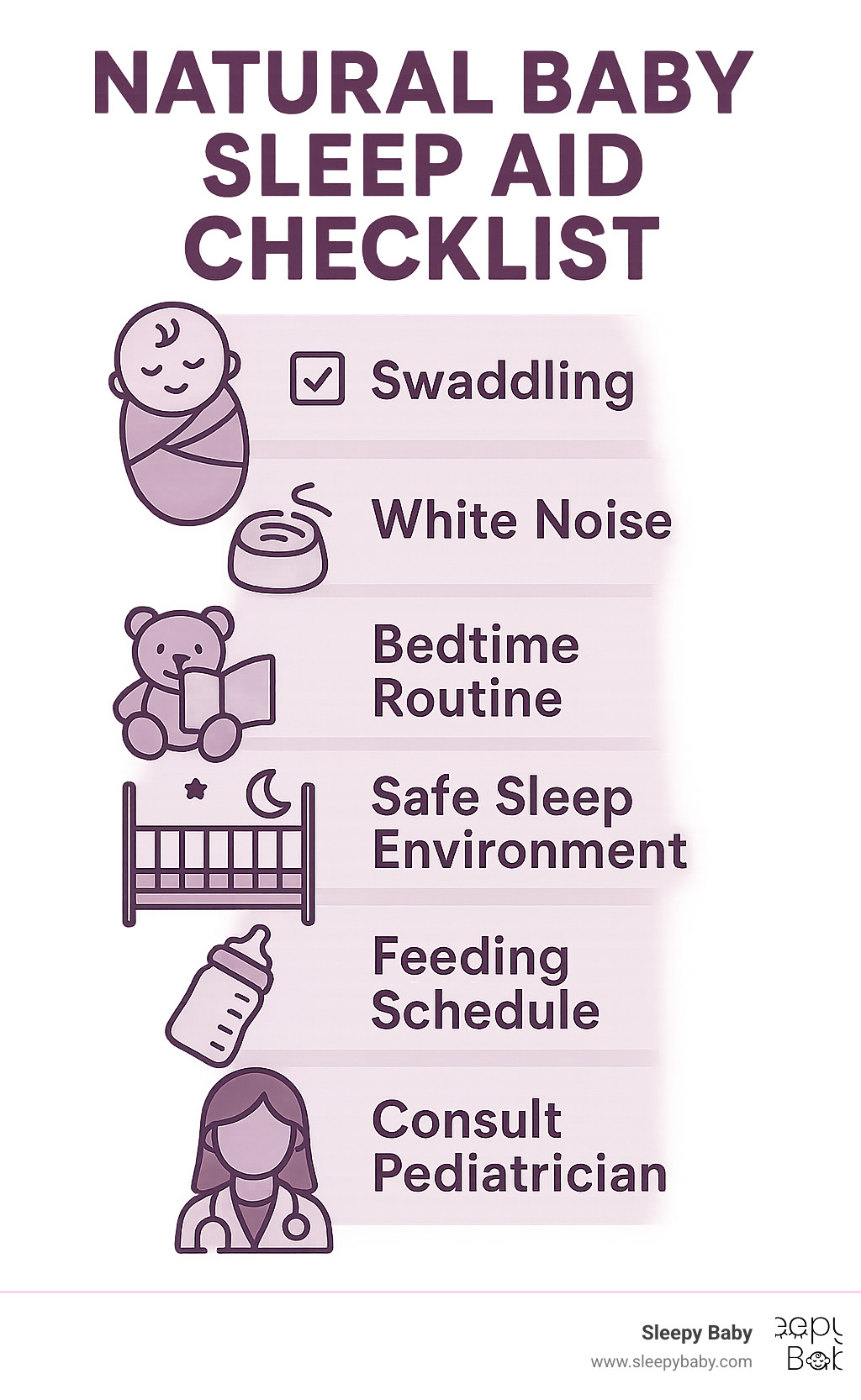
Those sweet, peaceful nights of sleep are coming. Trust in these time-tested methods, be patient with the process, and know that both you and your baby will be resting better soon. Sweet dreams are absolutely possible with the right natural approach.


